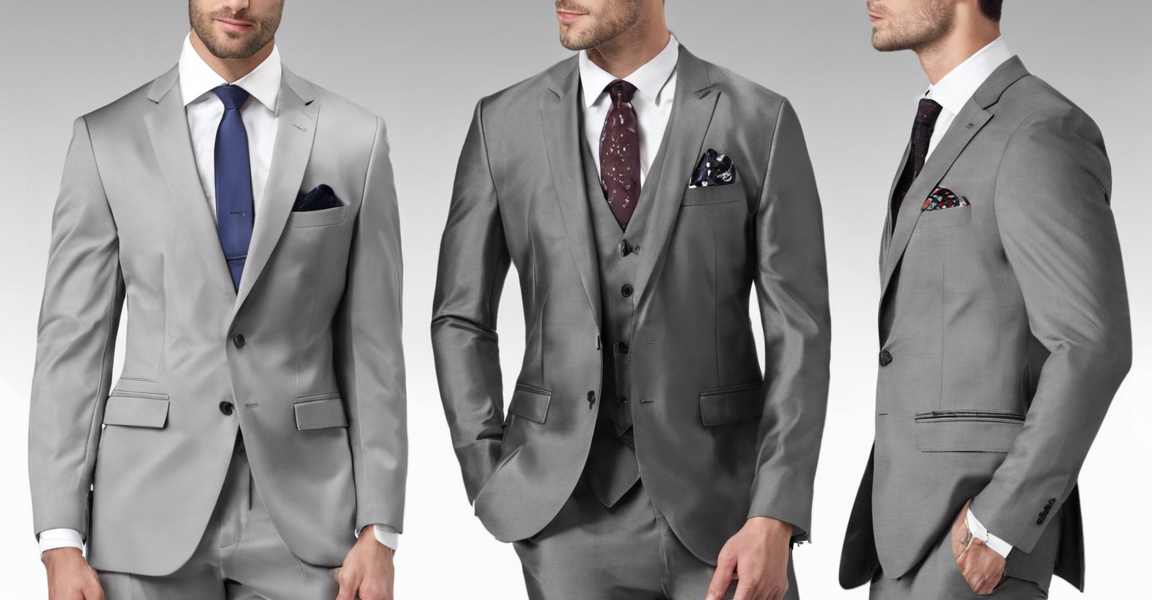Finding the perfect suit is an essential component of a man’s wardrobe. Whether it’s for a special occasion, a job interview, or everyday professional wear, a well-fitted suit can make a lasting impression. However, with so many options available, it can be overwhelming to choose the right one. Here are some tips to help you navigate the process and select the perfect suit for any occasion.
Understanding Suit Types and Styles
When choosing a suit, it’s essential to understand the different types and styles available. The two most common styles are the single-breasted and the double-breasted suit. The single-breasted suit is versatile and suitable for most body types, while the double-breasted suit exudes a more formal and classic look.
Additionally, suits come in various fits, including slim fit, regular fit, and tailored fit. Slim fit suits are more form-fitting and modern, while regular fit suits offer a more traditional silhouette. Tailored fit suits strike a balance between the two, providing a tailored look without being too tight.
Choosing the Right Fabric
The fabric of a suit plays a significant role in its comfort and durability. Common suit fabrics include wool, cotton, linen, and silk. Wool suits are versatile and suitable for year-round wear, while cotton and linen suits are ideal for warmer climates. Silk suits are more luxurious and best reserved for special occasions.
It’s essential to consider the weight and weave of the fabric as well. Lighter fabrics are ideal for summer months, while heavier fabrics provide warmth in cooler weather. Popular weaves include twill, herringbone, and plain.
Paying Attention to Fit
The fit of a suit is crucial in determining how sharp and stylish it looks on you. Key areas to focus on when checking the fit include the shoulders, chest, waist, and sleeves. The shoulder seams should align with your shoulders, and the jacket should lie flat against your chest without pulling or stretching.
The jacket’s waist should be tailored to flatter your body shape without being too tight or too loose. Additionally, the sleeves should end at your wrist bone, allowing a quarter to half an inch of your shirt cuff to show.
Selecting the Right Color and Pattern
When choosing a suit, consider the occasion and your personal style preferences. Classic colors like navy, charcoal, and gray are versatile options that can be dressed up or down. Black suits are reserved for formal events such as black-tie affairs or funerals.
In terms of patterns, solid colors are timeless and can be easily paired with different shirts and ties. Stripes and checks add visual interest to your outfit but should be chosen carefully to complement your body type and personal style.
Investing in Tailoring
No matter how expensive or high-quality a suit is, the fit can make or break its overall appearance. Investing in tailoring is essential to ensure your suit fits you perfectly. A skilled tailor can adjust the jacket’s length, waist, and sleeves, as well as the pants’ waist and length to create a personalized fit that enhances your silhouette.
FAQs:
Q: How should a suit jacket fit?
A: A suit jacket should fit well in the shoulders, lie flat against the chest without pulling, and have sleeves that end at the wrist bone.
Q: Can I wear a black suit to a job interview?
A: Black suits are typically reserved for formal events like black-tie affairs or funerals. For a job interview, opt for navy, charcoal, or gray for a more versatile and professional look.
Q: How do I know if a suit is the right length?
A: The jacket length should cover your buttocks and the pants should break slightly on your shoes. Avoid overly long or short jacket and pant lengths.
Q: Should I dry clean my suit often?
A: Dry cleaning can be harsh on suits, so it is recommended to dry clean them only when necessary. Spot cleaning and steaming can help maintain your suit’s freshness between cleanings.
Q: Can I mix and match suit separates?
A: While some suit separates can be mixed and matched, it is important to ensure the fabrics, colors, and patterns complement each other to create a cohesive look.
Choosing the perfect suit is a blend of style, fit, and personal preference. By understanding the different suit types, fabrics, fits, colors, and patterns, and investing in tailoring, you can select a suit that not only looks great but also makes you feel confident and polished in any setting.

